"Plane ideas Ilyushin DB-3TP. The Soviet Naval Aviation lacked sufficient shore based airfields in the White and Barents seas and Pacific ocean coast areas. This restricted the DB-3Ts deployment in these regions. In 1938, the Soviet Navy ordered a floatplane version of the DB-3T to meet this requirement. A standard production DB-3S was converted into the DB-3TP (Torpedo bomber floatplane in Russian). Two Type Zh floats purchased from Britians Short brothers Ltd, replaced the conventional landing gear (Yes the same people who made the sunderland) The landing gear was deleted and the main wheel wells were faired over. Hand rails were mounted on both sides of the nose in front of the cockpit and on each fuelsage side between the dorsal fairings end and the MV-3 Gun turret. The T-18 Pylon mounted on the centerline held either one 45-36AN Torpedo or one 900kg AMG-1 Sea mine. Two additional pylons flanked the T-18 to carry 400kg of bombs. No defensive armament was fitted during the factory test and evaluation trials. The DB-3TP prototype was built in early 1938 and test pilot Vlad kokkinaki flew the test trials at Rybinsk dam. The type had been recommended for series production and the Soviet naval aviation ordered 15 DB-3TPs even before field evaluation began. The Soviet navy held the evaluation trials at Sevastapol on the Black Sea in june to September 1938. These exposed the DB-3TPs shortcomings which included difficult maintenance and armament loading. A torpedo laden DB-3TP achieved a top speed of 232 Miles perhour slower then the Land based DB-3s. Perfect gift plane material and even better seaplane potential. "

The DB-3 went into production at Plant No. 39 in Moscow and Plant No. 18 in Voronezh. To perfect the bomber during series production, Plant No. 39’s experimental workshop was transformed into a design bureau, with Sergei Ilyushin as chief designer. This was simply a formality, because by that time the Ilyushin OKB had already been formed as a united team of designers capable of solving different problems concerning the development and updating of advanced combat aircraft. From May to October 1937 pre-production DB-3 No. 3039002 underwent state tests at the Nauchno Issledovatelyskii Institut (NIl – scientific and research institute of the WS). Its performance proved to be slightly inferior to that of the prototype. At a weight of 14,550lb (6,600kg) it had a sea level speed of 201mph (325km/h), attained 242mph (390km/h) at 16,400ft (5,000m) and reached its service ceiling in 46 minutes. With such a performance the DB-3 considerably outperformed Germany’s Junkers Ju86D and even the new Heinkel He 111B then under test at Rechlin. The He 111B was 6.2 to 12.4mph (10 to 20km/h) slower at all altitudes and its service ceiling was 4,600ft (1,400m) lower, while its armament was the same and controllability and stability were better. Not only were the DB-3’s aerodynamics excellent, but its fuel and oil capacity were equal to one-third of its maximum take-off weight. As a result it had ranges of 2,485 miles (4,000km) with a 1,102lb (500kg) bomb load and 1,926 miles (3,100km) with a bomb load of 2,204lb (1,000kg), while the He 111B managed 1,031 miles (1,660km) with 1,653lb (750kg) and 565 miles (910km) with 3,306lb (1,500kg). Early in its successful life the DB-3 gained the high appreciation of its pilots. Particularly notable were its ease to take-off, rapid climb, good stability without any suggestion of yaw, steady level flight (which made it a good bombing platform), tight turns with 40* to 60* of bank, and easy landing approach. It had no dangerous tendencies such as rapid loss of speed, wing stall and arbitrary ballooning during landing. The DB-3 also had good single-engine capabilities, and at a normal flying weight of 15,4321b (7,000kg) could climb and turn in both directions on one engine. However, pilots noted a lack of longitudinal stability owing to the generally accepted aft cg position. In 1937, with the help of a number of Ilyushin Design Bureau designers including A Belov, V Biryulin, M Yefimenko and A Levin, the two plants manufactured 45 DB-3s, and that year the bomber was introduced into the inventory of the Soviet WS. It considerably outperformed similar bombers built in Germany, England, France and the USA. Its high performance, especially with regard to range, was proved during two long range flights made by the modified TsKB-30, now named Moskva, during 1938-1939. On one of these, flown on 28/29th April 1939, pilot V Kokkinaki and navigator M Gordienko covered 4,971 miles 8,000km (4,048 miles/ 6,515km in a straight line) non-stop at an average speed of 216mph (348km/h). This was a significant achievement for Soviet aviation at that time. The Moskva’s long-distance flights greatly influenced the development of the DB-3’s airframe, engines and equipment. Moreover, flights by Kokkinaki and many other Soviet pilots enabled piloting techniques for long range flights to be developed and revealed the crew fatigue limits. These aspects also promoted efficient weather survey and communication services. All of this elevated the combat capabilities of Soviet long-range aviation, based at that time on different variants of the DB-3, which was constantly being improved. In 1938 the M-85 engine was replaced by the M-86 with an augmented rating of 950hp (708kW). This allowed the DB-3’s good take-off performance to be retained in spite of increased weight. The maximum speeds at various altitudes remained the same. From 1938 the bomber’s speed was increased by the installation of M-87As and the use of VISh-3 variable-pitch propellers instead of fixed-pitch units, which meant that engine power was used to best advantage during different phases of flight. The M-87A, which had the same take-off power as the M-86, provided 800hp (596kW) at an altitude of 15,500ft (4,700m). During tests at the NII WS early in 1939, two bombers produced at Plants Nos. 18 and 39 demonstrated improved performance. At a flying weight of 15,873 to 17,1951b (7,200 to 7,800kg) their sea level speeds were equal to 265 to 270mph (428 to 436km/h) at a critical altitude of 16,300ft (4,960m). The service ceiling had increased to 30,200 to 30,500ft (9,200 to 9,300m), and the time to climb to 16,400ft (5,000m) was 10.7 minutes. The take-off run was 1,148 to 1,312ft (350 to 400m) and the maximum overloaded weight had risen to 21,3751b (9,696kg). In the final test report it was noted that the aeroplanes produced by Plant No. 39 were of higher quality. In 1938 another factory, No. 126 in Komsomolsk, was also converted to DB-3 production, increasing output by 400 aircraft.
The Ilyushin Design Bureau constantly extended the applications of the DB-3, and the DB-3T variant of 1937 was used as a naval torpedo bomber. By virtue of special external attachment points it could carry a 45-36 type torpedo (the first number denoted the torpedo’s calibre in centimetres, the second its year of introduction into the inventory) with a 440lb (200kg) warhead and a total weight of 2,072lb (940kg). The DB-3T (T – torpedonosyets, torpedo) was equipped to enable the missile to be dropped using either low or high torpedo bombing methods. In the first case the 45-36 AN low altitude aerial torpedo was dropped from 100ft (30m) at a speed of 198mph (320km/h). It was forbidden to drop the torpedo lower or higher because its casing could be cracked when it hit the water or it could sink too deep. Although low altitude torpedo bombing offered the highest probability of destroying the target, it demanded a high degree of piloting skill and good aircraft handling and manoeuvrability. In high altitude torpedo bombing the DB-3T dropped the torpedo from 1,000ft (300m). The missile was parachuted down, and when it touched the water it began to travel in a circle on the target’s course. In addition to its torpedo, the DB-3T could carry the usual bomb load, and could be used as a bomber or for dropping mines. It could also serve as a long-range naval reconnaissance aircraft. Introduced into the USSR Naval Aviation inventory, the D8-3T became the first mass produced Soviet torpedo-bomber, fully meeting the operational requirements. On its technical basis a new aspect of Naval Aviation, Torpedo Aviation, was born in 1939-1940 for the destruction of enemy vessels by torpedoes and bombs, and also for mining enemy seaways and exits from naval bases.

However, the DB-3T could take off only from land bases, and sometimes these were not readily available, especially in the areas covered by the Northern Fleet. In 1938, therefore, a new version, the DB-3TP (Torpedonosyets Poplavkovyi – torpedo floatplane) was designed. The floats, taken from the Tupolev TB-1 P, naturally reduced the torpedo-bomber’s performance. During tests in the summer of 1938 at a normal flying weight of 16,644lb (7,550kg) and carrying a torpedo, the DB-3TP reached a speed of 213mph (343 km/h) at 13,100ft (4,000m), and its climb rate and service ceiling were also reduced. Even this performance met estimated requirements and was better than the Beriev MDR-5 and Chyetverikov MDR-6 flying-boats. The DB-3TP retained the type’s good handling. Test pilot Sukhomlin assessed the seaplane thus: ‘The aircraft is well-produced as a torpedo-bomber and naval high-speed bomber. It is fully suited to these roles’. Nevertheless, the DB-3TP was not put into series production owing to operational complications. It was very difficult to load bombs, attach torpedoes and service the engines while the aircraft was on the water.
Development: DB-3

The DB-3 went into production at Plant No. 39 in Moscow and Plant No. 18 in Voronezh. To perfect the bomber during series production, Plant No. 39’s experimental workshop was transformed into a design bureau, with Sergei Ilyushin as chief designer. This was simply a formality, because by that time the Ilyushin OKB had already been formed as a united team of designers capable of solving different problems concerning the development and updating of advanced combat aircraft. From May to October 1937 pre-production DB-3 No. 3039002 underwent state tests at the Nauchno Issledovatelyskii Institut (NIl – scientific and research institute of the WS). Its performance proved to be slightly inferior to that of the prototype. At a weight of 14,550lb (6,600kg) it had a sea level speed of 201mph (325km/h), attained 242mph (390km/h) at 16,400ft (5,000m) and reached its service ceiling in 46 minutes. With such a performance the DB-3 considerably outperformed Germany’s Junkers Ju86D and even the new Heinkel He 111B then under test at Rechlin. The He 111B was 6.2 to 12.4mph (10 to 20km/h) slower at all altitudes and its service ceiling was 4,600ft (1,400m) lower, while its armament was the same and controllability and stability were better. Not only were the DB-3’s aerodynamics excellent, but its fuel and oil capacity were equal to one-third of its maximum take-off weight. As a result it had ranges of 2,485 miles (4,000km) with a 1,102lb (500kg) bomb load and 1,926 miles (3,100km) with a bomb load of 2,204lb (1,000kg), while the He 111B managed 1,031 miles (1,660km) with 1,653lb (750kg) and 565 miles (910km) with 3,306lb (1,500kg). Early in its successful life the DB-3 gained the high appreciation of its pilots. Particularly notable were its ease to take-off, rapid climb, good stability without any suggestion of yaw, steady level flight (which made it a good bombing platform), tight turns with 40* to 60* of bank, and easy landing approach. It had no dangerous tendencies such as rapid loss of speed, wing stall and arbitrary ballooning during landing. The DB-3 also had good single-engine capabilities, and at a normal flying weight of 15,4321b (7,000kg) could climb and turn in both directions on one engine. However, pilots noted a lack of longitudinal stability owing to the generally accepted aft cg position. In 1937, with the help of a number of Ilyushin Design Bureau designers including A Belov, V Biryulin, M Yefimenko and A Levin, the two plants manufactured 45 DB-3s, and that year the bomber was introduced into the inventory of the Soviet WS. It considerably outperformed similar bombers built in Germany, England, France and the USA. Its high performance, especially with regard to range, was proved during two long range flights made by the modified TsKB-30, now named Moskva, during 1938-1939. On one of these, flown on 28/29th April 1939, pilot V Kokkinaki and navigator M Gordienko covered 4,971 miles 8,000km (4,048 miles/ 6,515km in a straight line) non-stop at an average speed of 216mph (348km/h). This was a significant achievement for Soviet aviation at that time. The Moskva’s long-distance flights greatly influenced the development of the DB-3’s airframe, engines and equipment. Moreover, flights by Kokkinaki and many other Soviet pilots enabled piloting techniques for long range flights to be developed and revealed the crew fatigue limits. These aspects also promoted efficient weather survey and communication services. All of this elevated the combat capabilities of Soviet long-range aviation, based at that time on different variants of the DB-3, which was constantly being improved. In 1938 the M-85 engine was replaced by the M-86 with an augmented rating of 950hp (708kW). This allowed the DB-3’s good take-off performance to be retained in spite of increased weight. The maximum speeds at various altitudes remained the same. From 1938 the bomber’s speed was increased by the installation of M-87As and the use of VISh-3 variable-pitch propellers instead of fixed-pitch units, which meant that engine power was used to best advantage during different phases of flight. The M-87A, which had the same take-off power as the M-86, provided 800hp (596kW) at an altitude of 15,500ft (4,700m). During tests at the NII WS early in 1939, two bombers produced at Plants Nos. 18 and 39 demonstrated improved performance. At a flying weight of 15,873 to 17,1951b (7,200 to 7,800kg) their sea level speeds were equal to 265 to 270mph (428 to 436km/h) at a critical altitude of 16,300ft (4,960m). The service ceiling had increased to 30,200 to 30,500ft (9,200 to 9,300m), and the time to climb to 16,400ft (5,000m) was 10.7 minutes. The take-off run was 1,148 to 1,312ft (350 to 400m) and the maximum overloaded weight had risen to 21,3751b (9,696kg). In the final test report it was noted that the aeroplanes produced by Plant No. 39 were of higher quality. In 1938 another factory, No. 126 in Komsomolsk, was also converted to DB-3 production, increasing output by 400 aircraft.
DB-3T and DB-3TP

The Ilyushin Design Bureau constantly extended the applications of the DB-3, and the DB-3T variant of 1937 was used as a naval torpedo bomber. By virtue of special external attachment points it could carry a 45-36 type torpedo (the first number denoted the torpedo’s calibre in centimetres, the second its year of introduction into the inventory) with a 440lb (200kg) warhead and a total weight of 2,072lb (940kg). The DB-3T (T – torpedonosyets, torpedo) was equipped to enable the missile to be dropped using either low or high torpedo bombing methods. In the first case the 45-36 AN low altitude aerial torpedo was dropped from 100ft (30m) at a speed of 198mph (320km/h). It was forbidden to drop the torpedo lower or higher because its casing could be cracked when it hit the water or it could sink too deep. Although low altitude torpedo bombing offered the highest probability of destroying the target, it demanded a high degree of piloting skill and good aircraft handling and manoeuvrability. In high altitude torpedo bombing the DB-3T dropped the torpedo from 1,000ft (300m). The missile was parachuted down, and when it touched the water it began to travel in a circle on the target’s course. In addition to its torpedo, the DB-3T could carry the usual bomb load, and could be used as a bomber or for dropping mines. It could also serve as a long-range naval reconnaissance aircraft. Introduced into the USSR Naval Aviation inventory, the D8-3T became the first mass produced Soviet torpedo-bomber, fully meeting the operational requirements. On its technical basis a new aspect of Naval Aviation, Torpedo Aviation, was born in 1939-1940 for the destruction of enemy vessels by torpedoes and bombs, and also for mining enemy seaways and exits from naval bases.


However, the DB-3T could take off only from land bases, and sometimes these were not readily available, especially in the areas covered by the Northern Fleet. In 1938, therefore, a new version, the DB-3TP (Torpedonosyets Poplavkovyi – torpedo floatplane) was designed. The floats, taken from the Tupolev TB-1 P, naturally reduced the torpedo-bomber’s performance. During tests in the summer of 1938 at a normal flying weight of 16,644lb (7,550kg) and carrying a torpedo, the DB-3TP reached a speed of 213mph (343 km/h) at 13,100ft (4,000m), and its climb rate and service ceiling were also reduced. Even this performance met estimated requirements and was better than the Beriev MDR-5 and Chyetverikov MDR-6 flying-boats. The DB-3TP retained the type’s good handling. Test pilot Sukhomlin assessed the seaplane thus: ‘The aircraft is well-produced as a torpedo-bomber and naval high-speed bomber. It is fully suited to these roles’. Nevertheless, the DB-3TP was not put into series production owing to operational complications. It was very difficult to load bombs, attach torpedoes and service the engines while the aircraft was on the water.
Design specifics
General conception
Engine
Armament
Variants
- TsKB-26: Proof-of-concept prototype
- TsKB-30: First real prototype. Later modified, including removal of armament, for long-range record attempts as the “Moskva”. It flew from Moscow to Spassk-Dalny (7,580 km (4,710 mi)) in 24 h 36 min (an average speed of 307 km/h (191 mph)) mostly at 7,000 m (23,000 ft) under control of Vladimir Kokkinaki and A. M. Berdyanskij, then from Moscow to Miscou Island (New Brunswick, Canada) in 22 h 56 min. covering 8,000 km (5,000 mi) at 348 km/h (216 mph) average airspeed (Kokkinaki and Mikhail Gordienko).
- DB-3/2M-85: Initial production model
- DB-3/2M-86 (DB-3A): Engines upgraded to M-86, other minor changes
- DB-3/2M-87A (DB-3B) Engines upgraded to the Tumansky M-87A
- DB-3T: Torpedo bomber built in 1938, with either the M-86 or M-87 engine, armed with 45-36-AN or 45-36-AV torpedoes.
- DB-3TP: Seaplane torpedo bomber built in 1938. No production.
- DB-3M: First major upgrade powered by two M-87B or M-88 engines.
⚙ Ilyushin DB-3T specifications | |
| Gross Weight | Empty 4.298t, warload 1.000 |
| Max Takeoff weight | 6.494t |
| Lenght | 14,22m |
| Wingspan | 21,44m |
| Height | 4,19m |
| Wing Area | 65,60 m2 |
| Engine | 2x piston engine M-25, 2x780 hp |
| Top Speed, sea level | 320 kph low alt., 395 kph |
| Cruise Speed | 280 kph |
| Range | 1.800 km |
| Climb Rate | |
| Ceiling | 7.800 m |
| Armament | 7,62 mm machine-gun ShKAS with 2.500 rounds. |
| Crew | 6 |
Service
Gallery
Author's illustrations: Types and liveries

https://massimotessitori.altervista.org/sovietwarplanes/pages/db3-il4/tapanidb3/4black-mtap1.htm
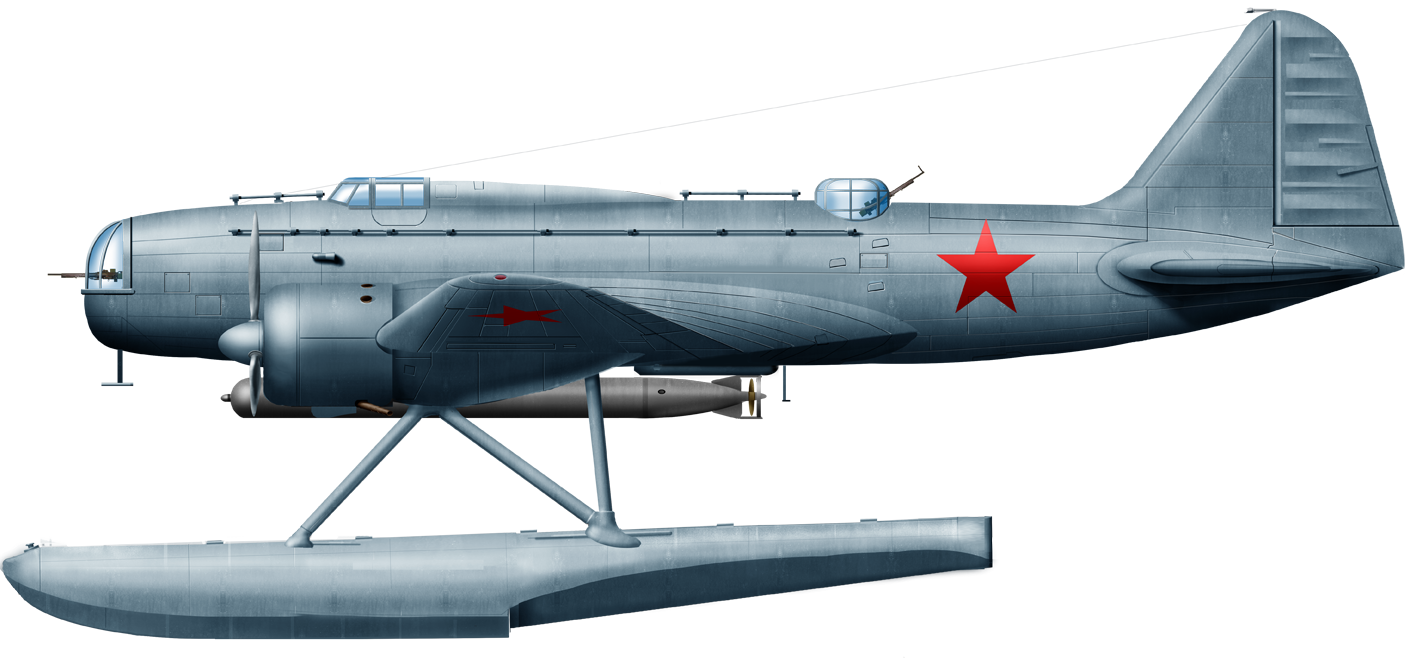
Float version
Additional photos




Resources
Books
Gordon, Yefim; Khazanov, Dmitri (April 1999). Soviet Combat Aircraft of WW2. Vol. 2: Twin-Engined Fighters. Earl Shilton, Midland Publishing Ltd.Gordon, Yefim; Komissarov, Dmitriy and Sergey (2004). OKB Ilyushin: A History of the Design Bureau and its Aircraft. Ian Allan.
Keskinen, Kalevi; Stenman, Kari; Niska, Klaus (1982). Venäläiset Pommittajat (Soviet Bombers). Suomen Ilmavoimien Historia. Vol. 9.
Nowarra, Heinz J.; Duval, G.R (1971). Russian Civil and Military Aircraft, 1884-1969. London: Fountain Press.
Stapfer, Hans-Heiri (2004). Ilyushin Il-4 in Action. Aircraft. Vol. 192. Carrollton, Texas: Squadron/Signal Publications.
Links
The model corner
- Macchi M5 (1918)
- Ansaldo ISVA (1918)
- Short 184 (1916)
- Fairey Campania (1917)
- Sopwith Cuckoo (1917)
- Felixstowe F.2 (1917)
- Friedrichshafen FF 33 (1916)
- Albatros W4 (1916)
- Hanriot HD.2
- Grigorovitch M5
- IJN Farman MF.7
- IJN Yokosho Type Mo
- Yokosho Rogou Kougata (1917)
- Yokosuka Igo-Ko (1920)
- Aeromarine 39
- Vought VE-7
- Boeing FB.5 (1923)
- Boeing F4B (1928)
- Vought O2U/O3U Corsair (1928)
- Supermarine Seagull (1922)
- Blackburn Ripon (1926)
- Fairey IIIF (1927)
- Fairey Seal (1930)
- Mitsubishi 1MF (1923)
- Mitsubishi B1M (1923)
- Yokosuka E1Y (1923)
- Nakajima A1N (1927)
- Nakajima A4N (1929)
- CANT 18
WW1
 USA
USA
Interwar
- Curtiss SOC seagull (1934)
- Grumman FF (1931)
- Curtiss F11C Goshawk (1932)
- Grumman F2F (1933)
- Grumman F3F (1935)
- Northrop BT-1 (1935)
- Grumman J2F Duck (1936)
- Consolidated PBY Catalina (1935)
- Brewster/NAF SBN-1 (1936)
- Curtiss SBC Helldiver (1936)
- Vought SB2U Vindicator (1936)
- Brewster F2A Buffalo (1937)
- Douglas TBD Devastator (1937)
- Vought Kingfisher (1938)
- Curtiss SO3C Seamew (1939)
- Douglas SBD Dauntless (1939)
- Grumman F4F Wildcat (1940)
- F4U Corsair (NE) (1940)
- Brewster SB2A Buccaneer (1941)
- Grumman TBF/TBM Avenger (1941)
- Consolidated TBY Sea Wolf (1941)
- Grumman F6F Hellcat (1942)
- Curtiss SB2C Helldiver (1942)
- Curtiss SC Seahawk (1944)
- Grumman F8F Bearcat (1944)
- Ryan FR-1 Fireball (1944)
- Douglas AD-1 Skyraider (1945)
Fleet Air Arm
- Fairey Swordfish (1934)
- Supermarine Walrus (1936)
- Fairey Seafox (1936)
- Blackburn Skua (1937)
- Short Sunderland (1937)
- Blackburn Roc (1938)
- Fairey Albacore (1940)
- Fairey Fulmar (1940)
- Grumman Martlet (1941)
- Hawker sea Hurricane (1941)
- Brewster Bermuda (1942)
- Fairey Barracuda (1943)
- Fairey Firefly (1943)
- Grumman Tarpon (1943)
- Grumman Gannet (1943)
- Supermarine seafire (1943)
- Blackburn Firebrand (1944)
- Hawker Sea Fury (1944)
IJN aviation
- Aichi D1A "Susie" (1934)
- Mitsubishi A5M "Claude" (1935)
- Nakajima A4N (1935)
- Yokosuka B4Y "Jean" (1935)
- Mitsubishi G3M "Nell" (1935)
- Nakajima E8N "Dave" (1935)
- Kawanishi E7K "Alf" (1935)
- Nakajima B5N "Kate" (1937)
- Kawanishi H6K "Mavis" (1938)
- Aichi D3A "Val" (1940)
- Mitsubishi A6M "zeke" (1940)
- Nakajima E14Y "Glen" (1941)
- Nakajima B6N "Jill" (1941)
- Mitsubishi F1M "pete" (1941)
- Aichi E13A Reisu "Jake" (1941)
- Kawanishi E15K Shiun "Norm" (1941)
- Nakajima C6N Saiun "Myrt" (1942)
- Yokosuka D4Y "Judy" (1942)
Luftwaffe
- Caspar U1
- Dornier Do J Wal (1922)
- Arado 196 (1937)
- Me109 T (1938)
- Blohm & Voss 138 Seedrache (1940)
Italian Aviation
- Savoia-Marchetti S.55
- IMAM Ro.43/44
- CANT Z.501 Gabbiano
- CANT Z.506 Airone
- CANT Z.508
French Aeronavale
- GL.300 (1926-39)
- Levasseur PL.5 (1927)
- Loire 210 (1936)
- Loire 130 (1937)
- LN 401 (1938)
Soviet Naval Aviation
- Shavrov SH-2 (1928)
- Tupolev TB-1P (1931)
- Beriev MBR-2 (1930)
- Tupolev MR-6 (1933)
- Tupolev MTB-1 (1934)
- Beriev Be-2 (1936)
- Polikarpov I16 naval (1936)
- Beriev Be-4 (1940)
-
Skoda Š-328V
R-XIII Idro
Fokker C.XI W (1934)
WW2
- De Havilland Sea Vixen
- Hawker Sea Hawk
- Blackburn Buccaneer
- Hawker Sea Harrier
- Douglas A4 Skyhawk
- Grumman F9F Panther
- Vought F8 Crusader
- McDonnell-Douglas F-4 Phantom-II
- North Am. A5 Vigilante
- TU-142
- Yak 38 forger
☢ Cold War
✧ NATO
 Fleet Air Arm
Fleet Air Arm
 US Navy
US Navy
☭ Warsaw Pact
Merch
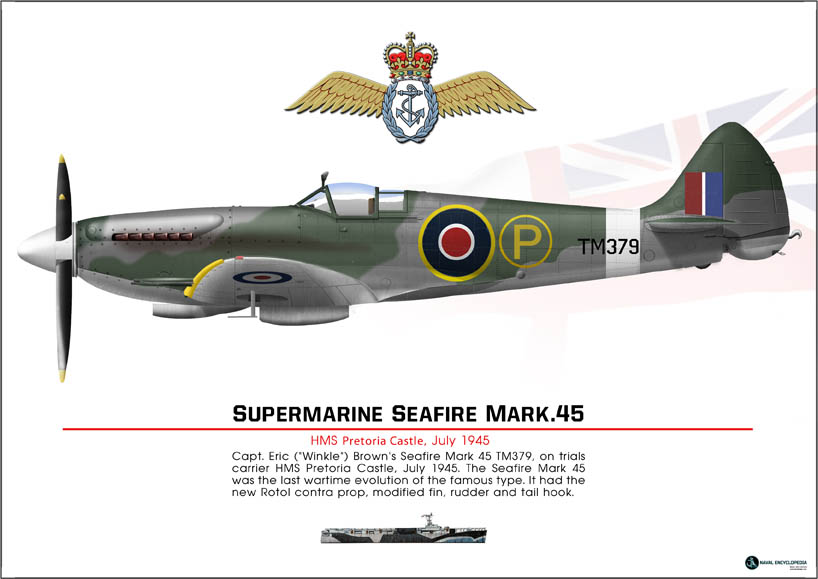
Seafire Mark 45; HMS Pretoria Castle
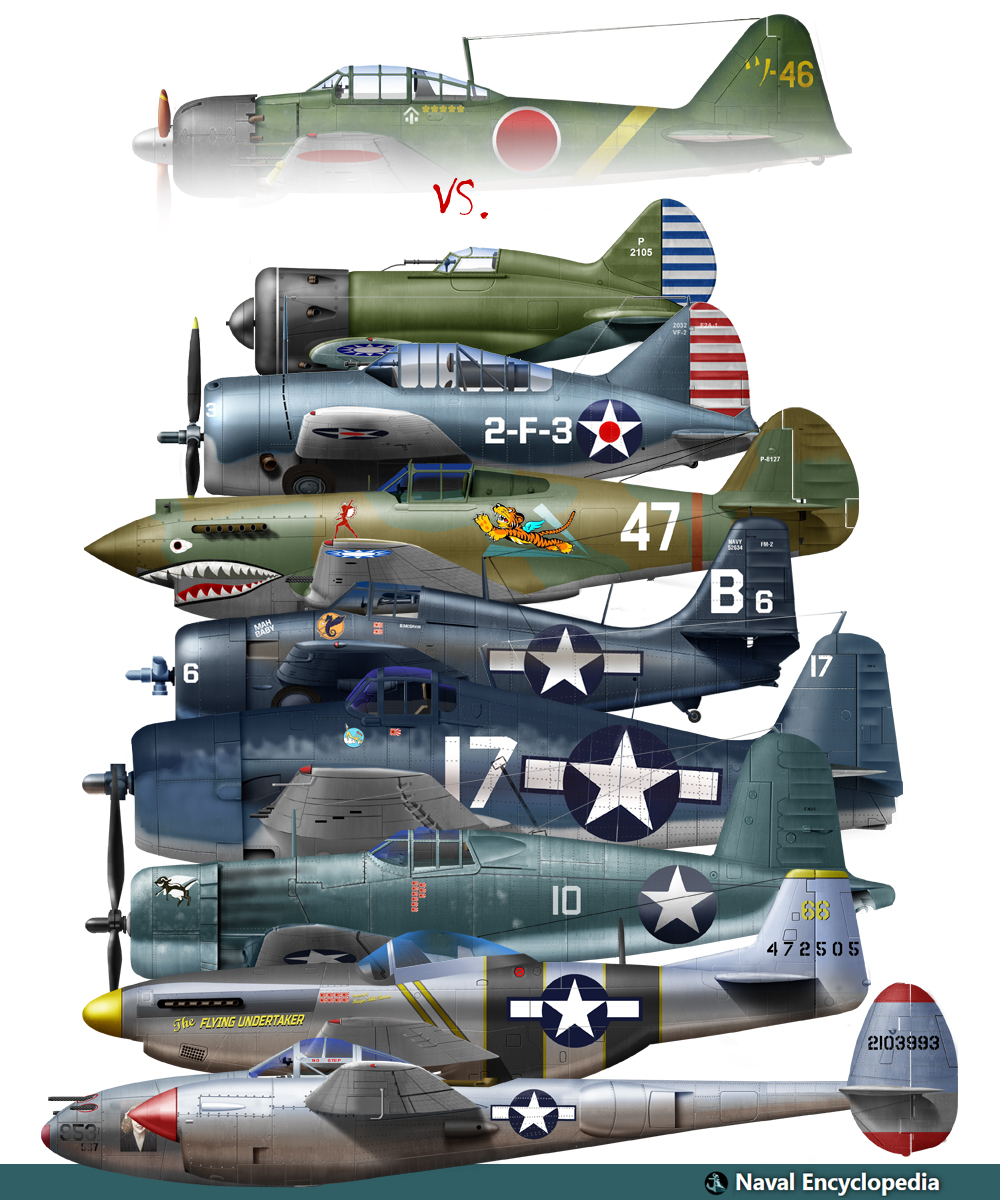
Zeros vs its aversaries
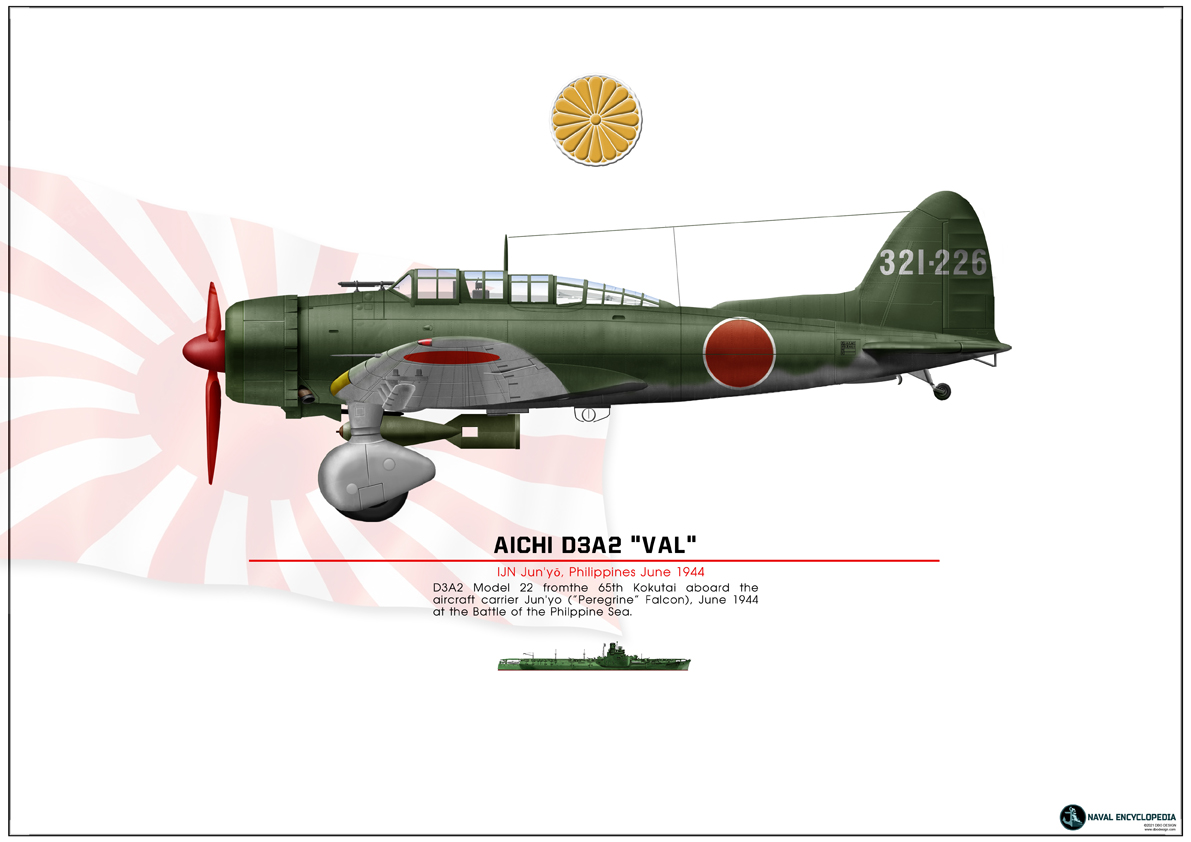
Aichi D3A “Val” Junyo
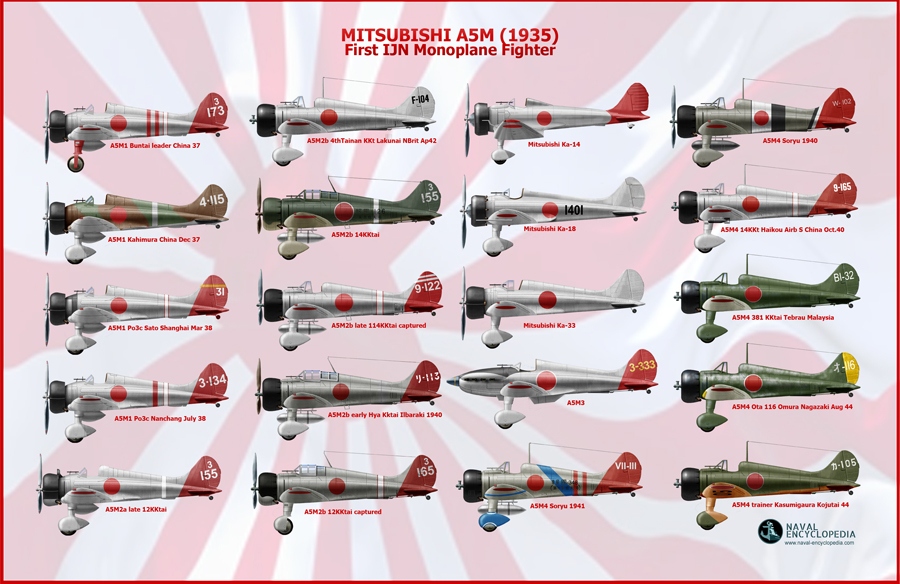
Mitsubishi A5M poster
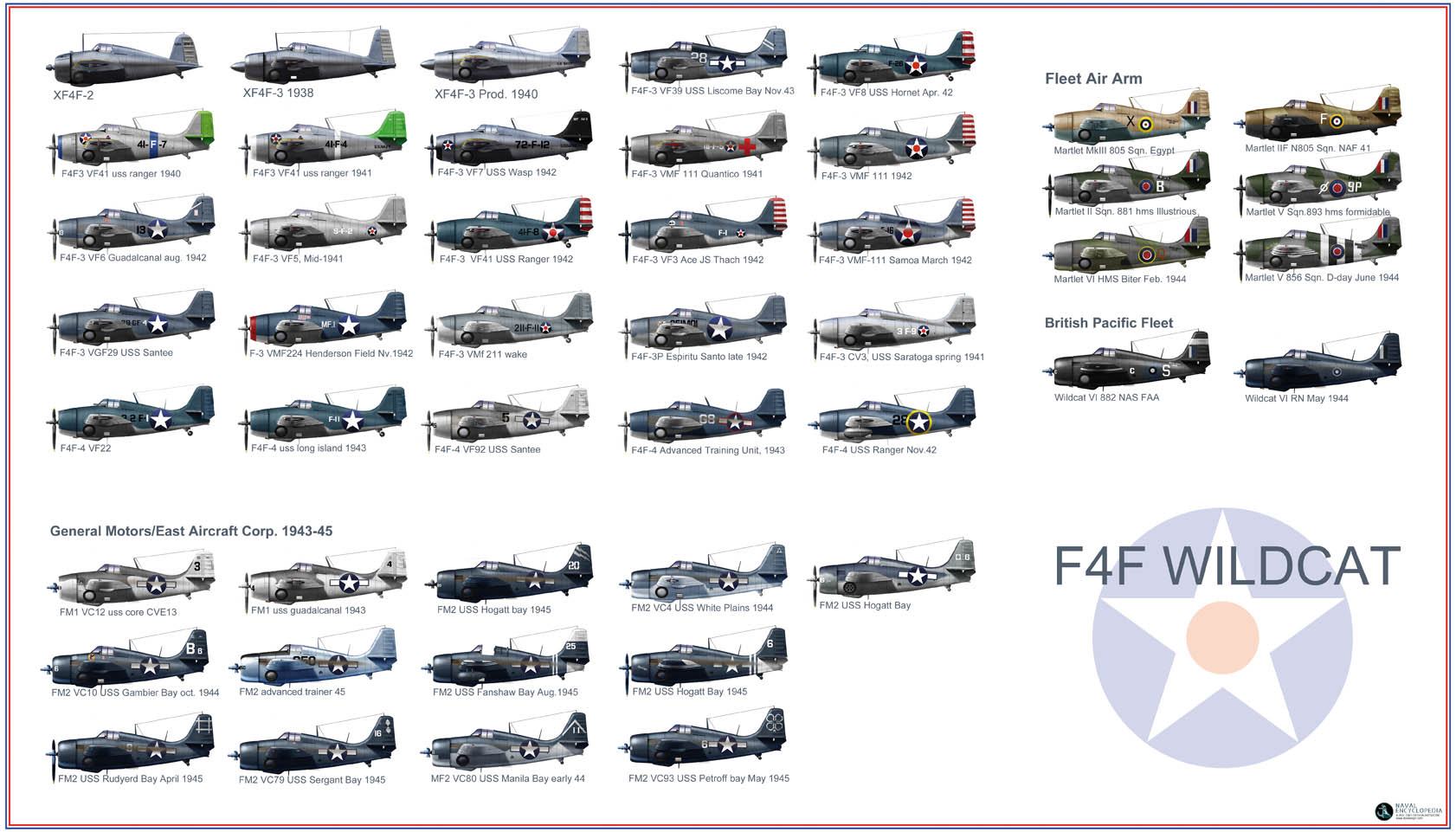
F4F wildcat
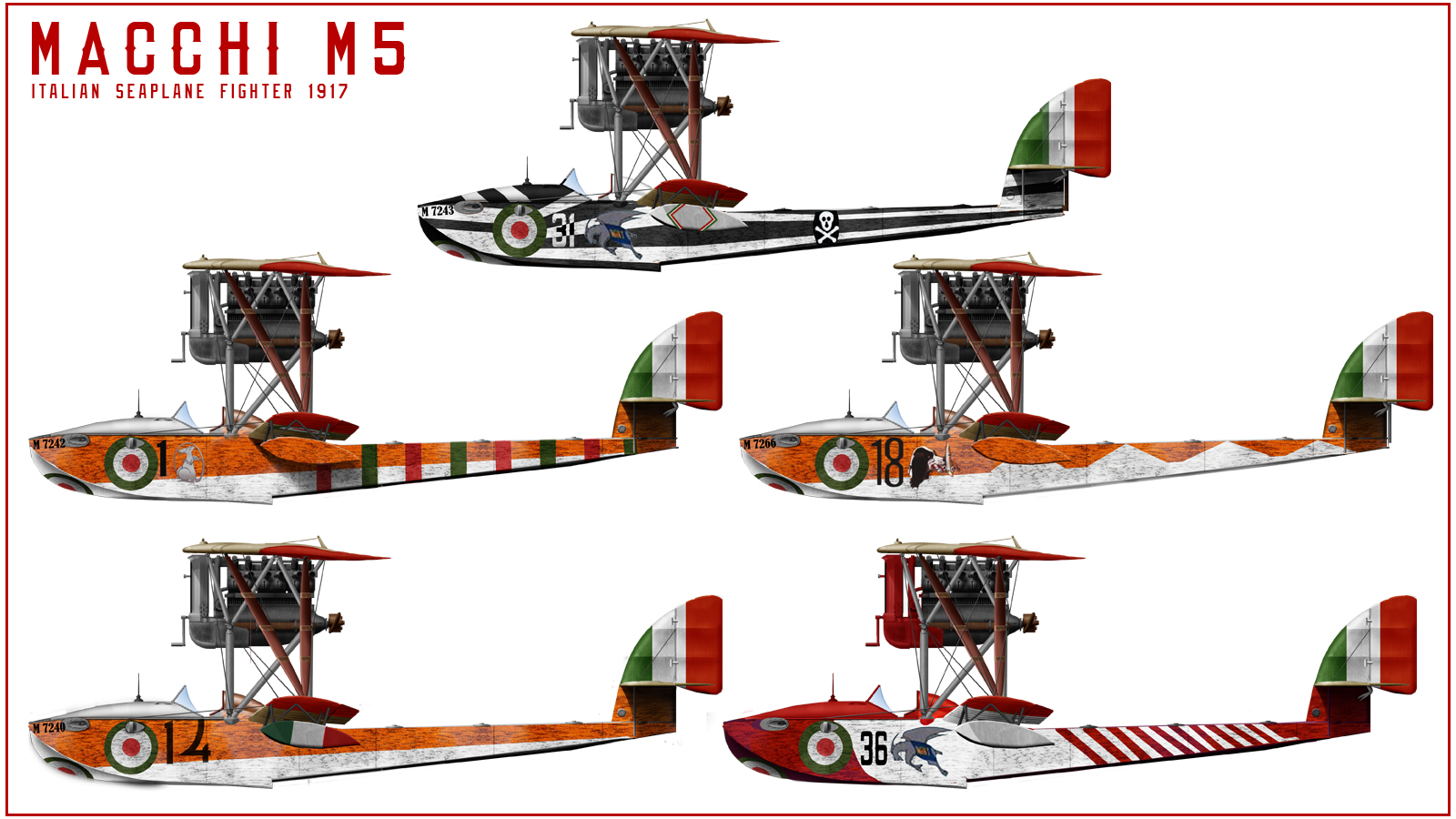
Macchi M5
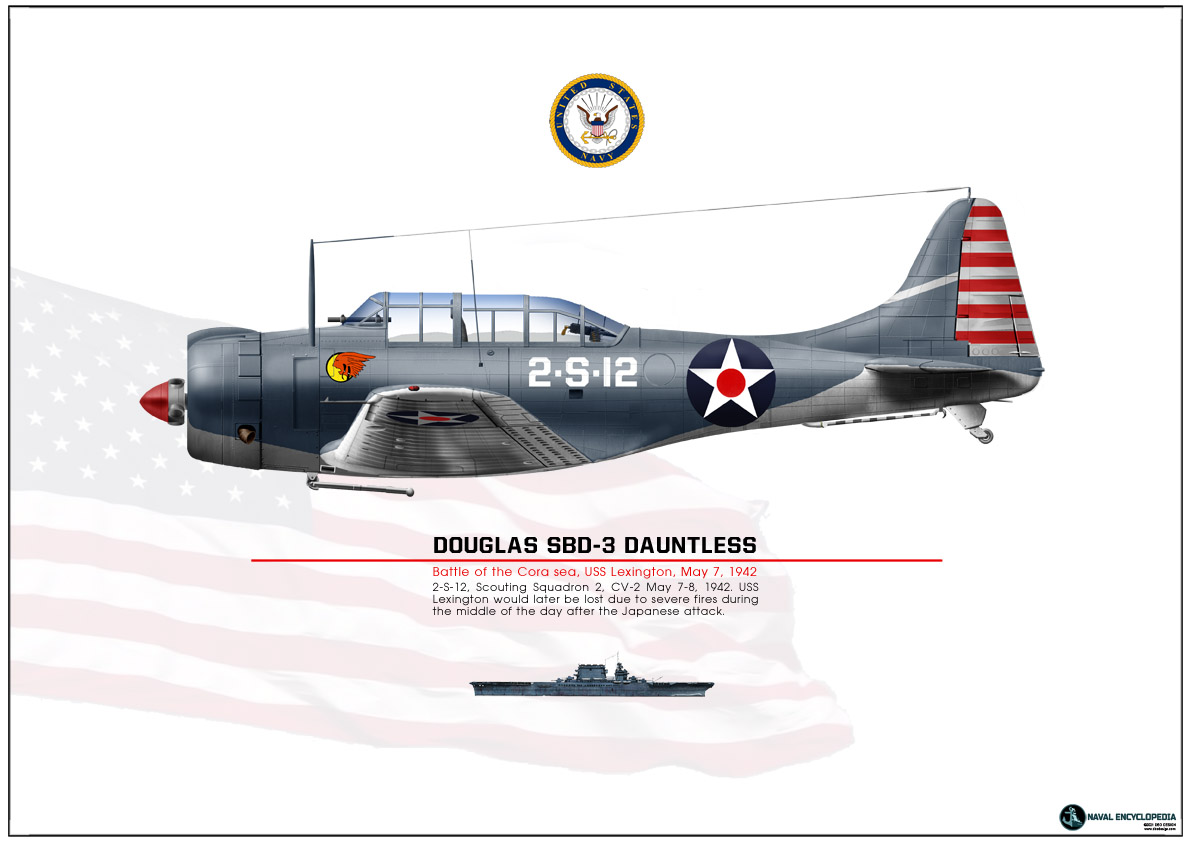
SBD Dauntless Coral Sea
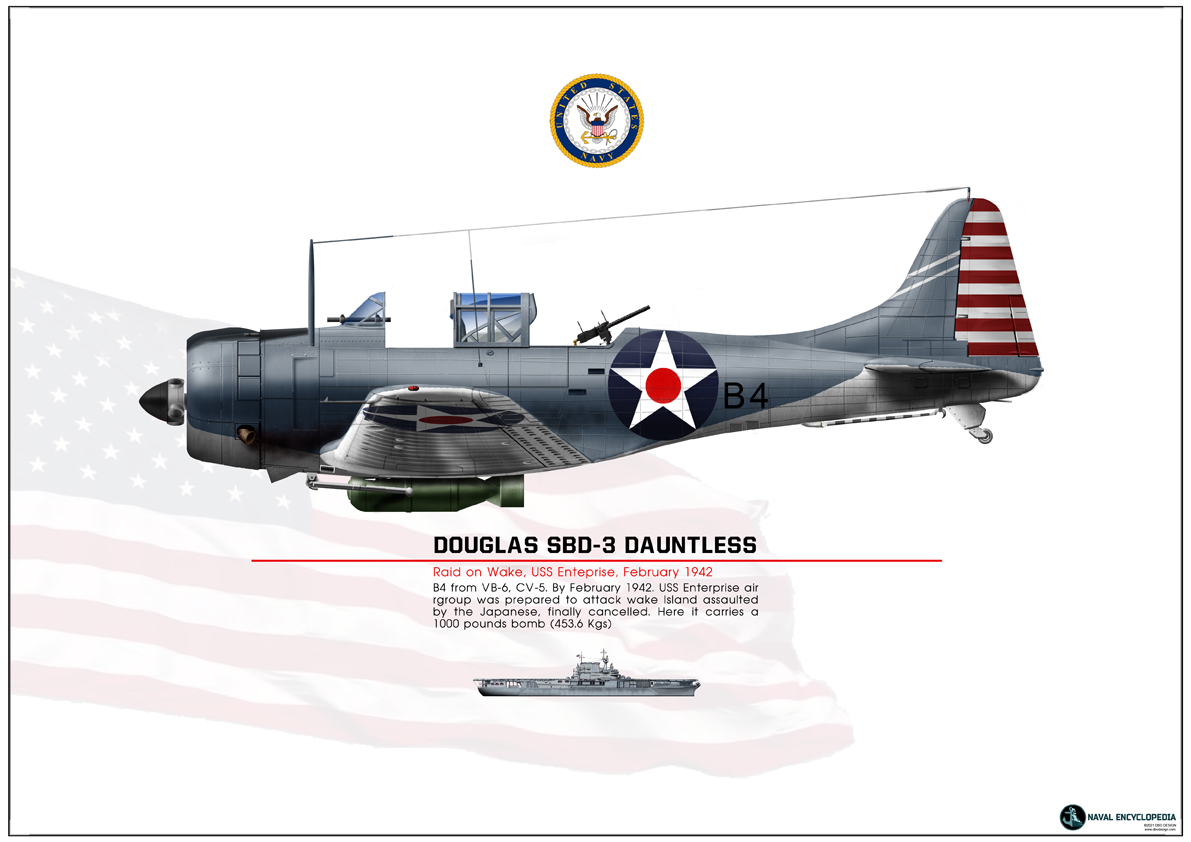
SBD Dauntless USS Enterprise
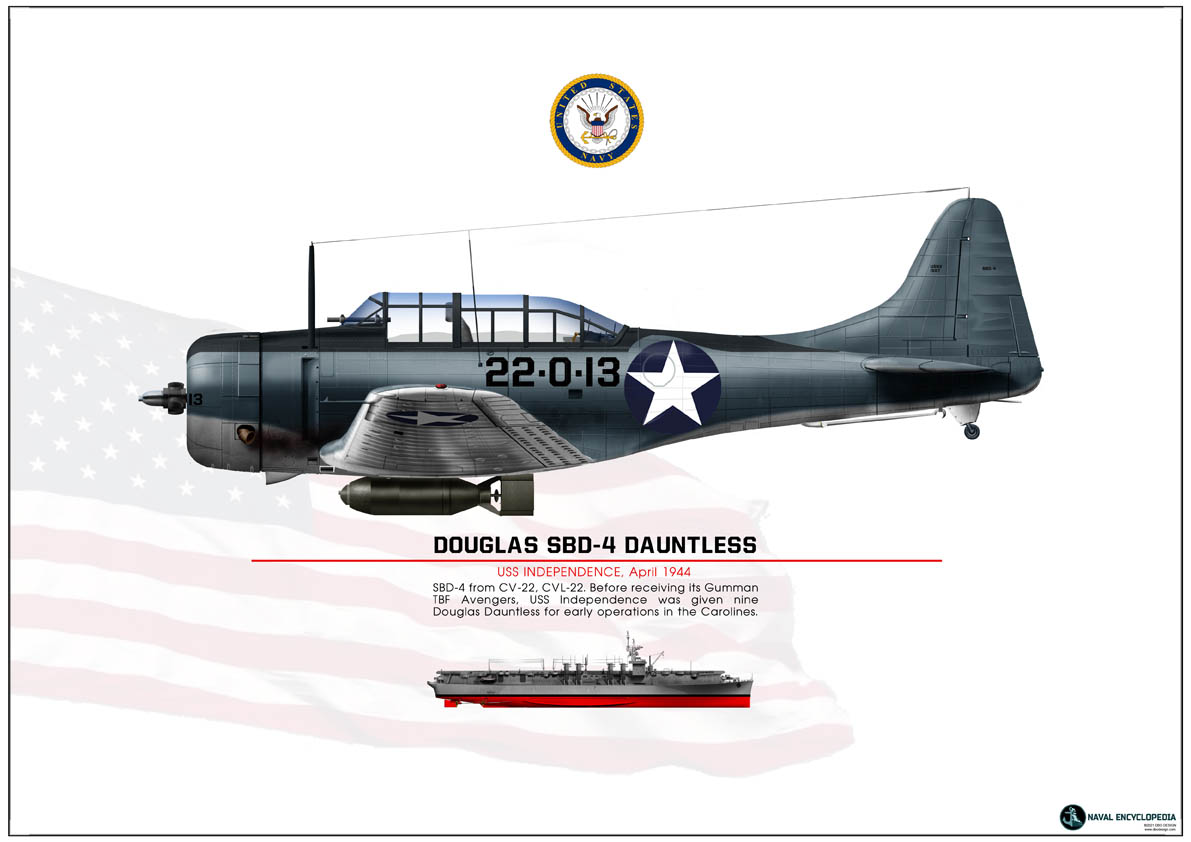
SBD-4 CV22
